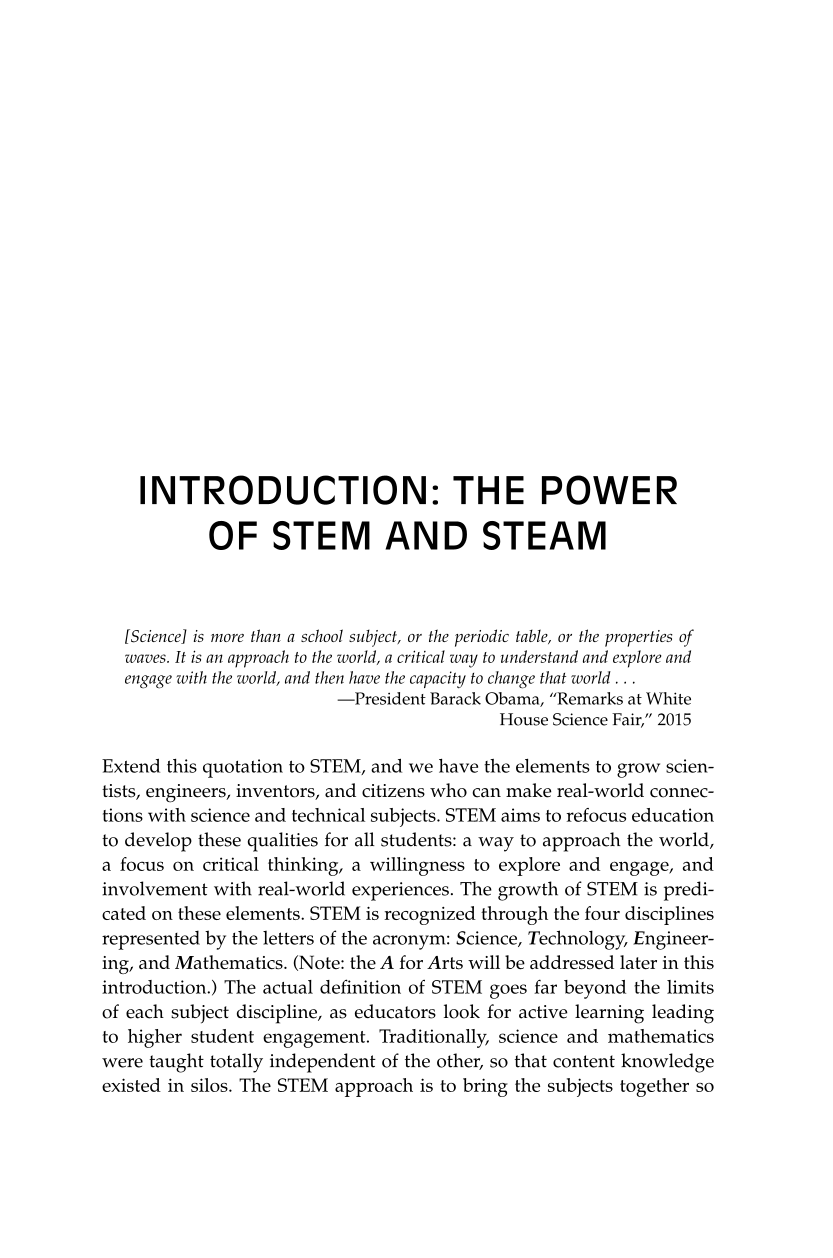INTRODUCTION : THE POWER
OF STEM AND STEAM
[Science] is more than a school subject, or the periodic table, or the properties of
waves. It is an approach to the world, a critical way to understand and explore and
engage with the world, and then have the capacity to change that world . . .
—President Barack Obama, “Remarks at White
House Science Fair,” 2015
Extend this quotation to STEM, and we have the elements to grow scien-
tists, engineers, inventors, and citizens who can make real-world connec-
tions with science and technical subjects. STEM aims to refocus education
to develop these qualities for all students: a way to approach the world,
a focus on critical thinking, a willingness to explore and engage, and
involvement with real-world experiences. The growth of STEM is predi-
cated on these elements. STEM is recognized through the four disciplines
represented by the letters of the acronym: S cience, T echnology, E ngineer-
ing, and M athematics. (Note: the A for A rts will be addressed later in this
introduction.) The actual defi nition of STEM goes far beyond the limits
of each subject discipline, as educators look for active learning leading
to higher student engagement. Traditionally, science and mathematics
were taught totally independent of the other, so that content knowledge
existed in silos. The STEM approach is to bring the subjects together so







































































































































































































































































